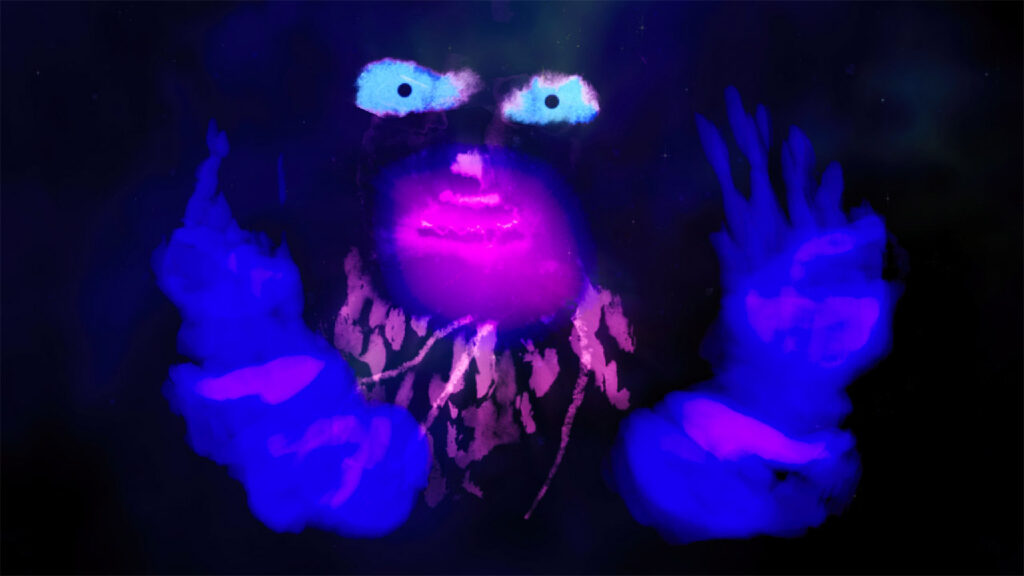On May 9th, 2025, as part of the 92nd Acfas Conference, the partnership will present a colloquium on the impact of screens and audiovisual content on sleep and dreams.

Olivier Du Ruisseau
This year, cinEXmedia is expanding its intersectoral projects aimed at studying the influence of films and screens on sleep and dreams. The colloquium “S’endormir en images : l’impact des contenus audiovisuels sur le sommeil et les rêves” (“Falling Asleep in Images: The Impact of Audiovisual Content on Sleep and Dreams”), presented on May 9th at the École de technologie supérieure (ÉTS) as part of the 92nd Acfas Conference, will consolidate this focus and highlight ongoing research.
The organizing committee for the event includes Santiago Hidalgo, Director of cinEXmedia; Thomas Carrier-Lafleur, Associate Director and Research Coordinator at the Laboratoire CinéMédias; and Marie-Josée Saint-Pierre, co-researcher of the partnership and professor at Université Laval.
“Our goal is not to present completed research, but to map out a new field of study that is attracting increasing interest,” explains Thomas Carrier-Lafleur. “When cinEXmedia was founded, we didn’t anticipate that sleep would become one of our key themes, but recent collaborations with Antonio Zadra (Department of Psychology, Université de Montréal) and Michelle Carr (Faculty of Medicine, Université de Montréal) led us in this direction.”
The first segment of the colloquium will showcase research at the intersection of film studies, sleep, and dream research. Santiago Hidalgo will open the session with a presentation titled “Rêve-t-on en Technicolor? Perméabilité des rêves et prégnance de la culture médiatique dans les rapports de rêve” (“Do We Dream in Technicolor? The Permeability of Dreams and the Influence of Media Culture in Dream Reports"), in which he will explore how dreams are sometimes described in clinical contexts using language that reflects patients’ cinematic influences and cultural background. Pauline Sarrazy, a doctoral student at Université de Montréal and a member of the organizing committee, will follow with a talk on dream reports, which she compares to film scripts from a narrative perspective. Finally, doctoral candidates Ajar Diushekeeva and Anthony Levasseur—who are pursuing studies in film and sleep medicine, respectively, at Université de Montréal—will close this section by offering complementary insights drawn from both the arts and health sciences.
Research-Creation
Marie-Josée Saint-Pierre is overseeing the research-creation component of the colloquium. “We were very fortunate to benefit from her expertise, as she has been making documentaries and animated films for many years,” notes Thomas Carrier-Lafleur. Together with two students from Université Laval, she will explore various approaches to translating dreams into animated films and works created using artificial intelligence.
Thomas Carrier-Lafleur will also moderate a discussion between filmmakers Félix Dufour-Laperrière and Philippe Lambert on the role of dreams in their creative processes—narratively, visually, and sonically. A roundtable discussion will then be led by cinEXmedia co-investigator André Habib, joined by Santiago Hidalgo, Marie-Josée Saint-Pierre, and Université de Montréal communication professor Aleksandra Kaminska. The panellists will discuss “how cinema adopts the logic of dreams and how film imagery influences our nocturnal imagination,” says the researcher.
CNIB: A New Partner
This event will also provide an overview of cinEXmedia’s recent work on related topics. In January, for example, we interviewed Antonio Zadra about his three-part study, one part of which focuses on the analysis of written dream reports to determine how cinematic language may shape dream memory. The other two segments of the project directly examine the impact of audiovisual content on sleep and dream quality.
A new collaboration with the Canadian National Institute for the Blind (CNIB) marks another step forward. As part of cinEXmedia’s “inclusive cinema” initiative, this project seeks to better understand how blind individuals experience dreaming, and how cinematic language might influence their dreams—even without direct visual input. “Some blind people engage with audiovisual content in various ways, including through audio description, and it’s fascinating to explore how these elements surface in their dreams,” summarizes Thomas Carrier-Lafleur.
The study will include clinical testing involving viewing sessions, followed by written dream descriptions by participants. A research-creation component is also planned, in which students will use the data collected “to visually recreate the dream experience through experimental short films,” the researcher adds.
Presented as part of the Acfas Conference, this colloquium not only aims to showcase current research linking cinema and sleep, but also to open a space for reflection on the directions this emerging field could take.
